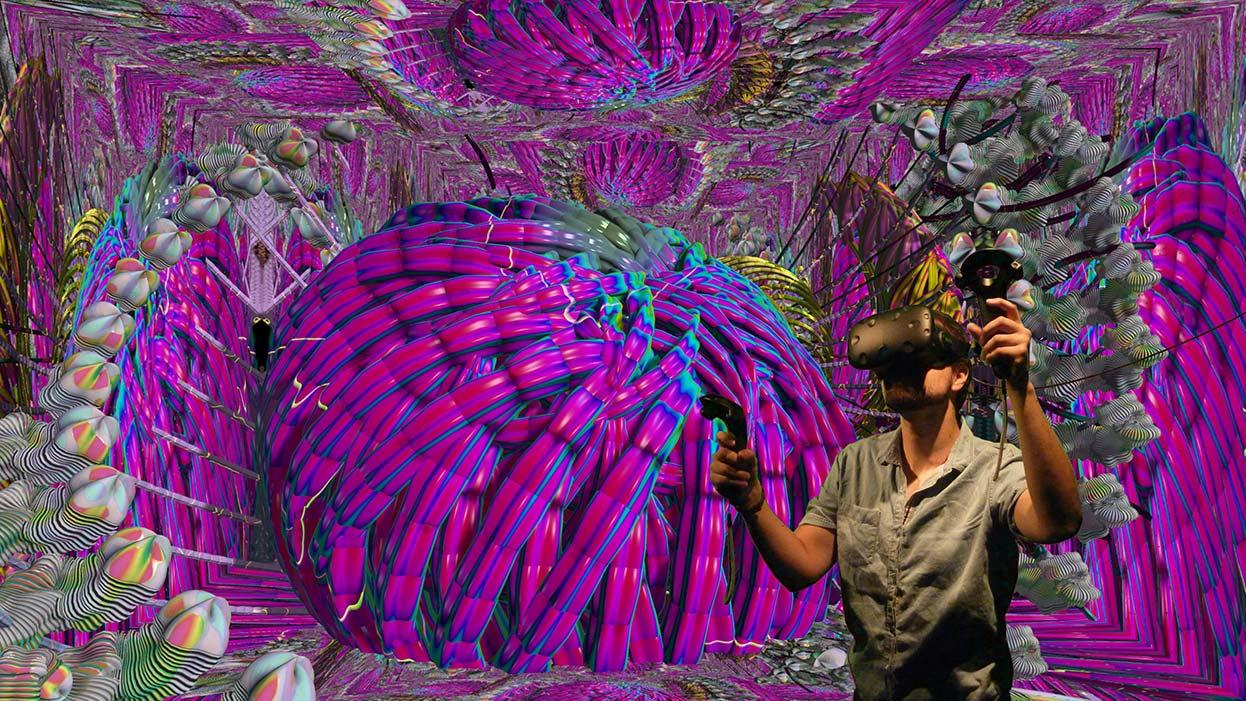Mutator VR
New ways to experience and understand science through Virtual Reality (VR).
Primary page content

VR might be a ground-breaking technology in principle, but in practice most of its applications have been inspired by established cinematic and gaming forms. With the development of the Mutator platform, Goldsmiths researchers created cross-disciplinary collaborations bringing together visual art, software engineering and scientific modelling.
The result is a suite of highly original VR experiences with diverse social and scientific impact. This work has secured a deep engagement with international arts and culture audiences, found significant real-world applications in science and more recently attracted significant commercial interest.
William Latham and Frederic Fol Leymarie’s Mutator platform enables users to immerse themselves in experientially rich virtual landscapes based on rigorous mathematical modelling of biological systems. The resulting pioneering VR experiences can be evocative artworks, illuminating scientific visualisations, educational models of biological processes, and entertaining immersive games.
As educational art-works, they have been taken into the public realm at globally renowned institutions as The Lowry in Manchester, the Pompidou Centre in Paris, and the Modern Art Museum in Shanghai, and have appeared in numerous less formal locations, including the New Scientist festival, the Kennin-iji Buddhist Temple in Kyoto, and the Horniman Museum and Gardens in south London.
In the late 1980s and early 1990s at IBM's UK Scientific Centre, Latham pioneered the use of algorithms to create computer graphics that mimic biological processes. The products of the FormGrow system became fine art exhibited in galleries and pop-culture via the rave scene but were also rooted in rigorous mathematical modelling by the biologist William Hamilton and software engineering by Stephen Todd. Mutator, and the development of the FoldSynth and CSynth systems, grew out of these roots.
It became clear that the platform could also support scientific visualisations if applied to real biological systems and help patients and researchers to understand how DNA folds, proteins dock, and viruses mutate. This visualisation work also led to the development, with Imperial College, of the educational game BioBlox and is now being expanded to illustrate the molecular mechanisms used by Covid-19.